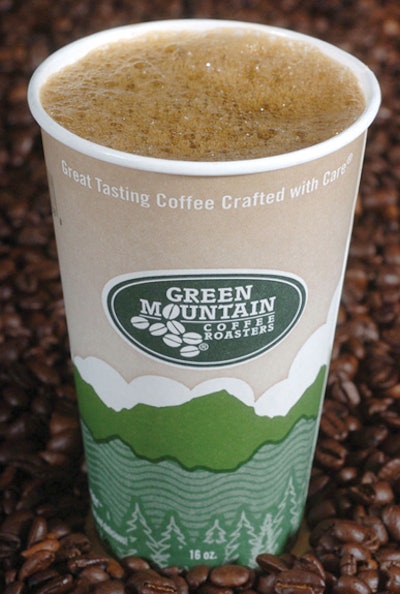
Green Mountain Coffee Roasters (GMCR) illustrates corporate conscience. In 1981, GMCR hung its shingle on the front of a small café in Waitsfield, VT. GMCR roasted specialty coffee right on the premises. Two years later the business, which then had seven employees, began a composting program using leftover coffee grounds. “Even then we realized that our business practices impact the world,” says Bob Stiller, president and CEO.
The demand for high-quality, freshly roasted coffee grew beyond the café’s walls, and the company opened additional retail stores in the Northeast. Restaurants and inns in the area asked for GMCR coffee and equipment. GMCR soon entered the wholesale business. At the same time, visitors asked if the roaster could send Green Mountain Coffee to their homes in New York, Florida, Pennsylvania, and Connecticut. This demand was filled by the birth of the company’s mail-order business. By 1993, GMCR had gone public, and in 1997, the cafés were closed to focus the company on wholesale and mail order sales opportunities. By 2006, the company’s 729 employees supported $225 million in sales.
During growth and through transition, the company never lost focus on environmental or social responsibility.
In 2006 and 2007, Corporate Responsibility Officer magazine listed GMCR as #1 on its list of 100 Best Corporate Citizens. For the past six years, GMCR has been on SustainableBusiness.com’s SB20 list of the world’s top sustainable stocks.
Breakthrough for renewable materials
In 2006, GMCR and International Paper introduced the first all natural paper hot beverage cup—the ecotainer™. The cup uses NatureWorks PLA to create a waterproof barrier on the paperboard. Sustainable Forestry Initiative (SFI) guidelines for management and harvesting are followed for the trees used to make the paper. No trees from old-growth or endangered forests are used. Seventy percent of the energy at the International Paper plant, which produces paper for ecotainers, comes from waste recovery, says GMCR.
The switch to the ecotainer reduced the consumption of nonrenewable petrochemical materials by approximately 250,000 lb on an annual production of more than 90 million hot cups. GMCR estimates that if all hot coffee cups used in the United States were ecotainers, about 31 million lb of nonrenewable petrochemical materials would be saved each year. In May 2007, GMCR and International Paper received the Specialty Coffee Association of America Sustainability Award.GMCR is exploring the development of a renewable bio-plastic lid for the ecotainer, and all of GMCR’s cold cups are manufactured using NatureWorks PLA.
Difficult packaging challenges
One of GMCR’s most successful lines is coffee packaged for the Keurig® Single-Cup Brewer. The GMCR K-Cup is a portion pack for the brewer consisting of three elements:
• the cup itself
• a pure white unbleached layer of filter paper coated with polyethylene, which is heat-sealed to the rim of the cup
• an aluminum foil top also coated with PE, which is heat-sealed to the top rim of the cup after the fresh coffee has been dropped in. This packaging limits the ability of oxygen and moisture to reduce the shelf life of the coffee.
























